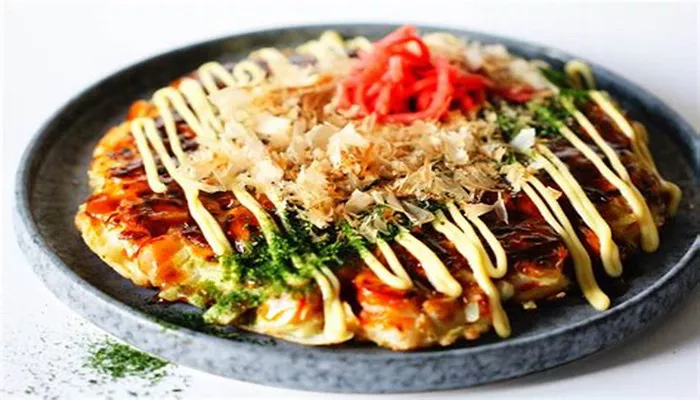Okonomiyaki is a beloved Japanese dish that combines various ingredients into a savory pancake. Popular in many parts of Japan, especially Osaka and Hiroshima, it has gained international popularity. This article will delve into the world of Okonomiyaki shops, covering their basic information, creation process, historical background, menu offerings, and special activities.
Basic Information of Okonomiyaki Shops
Okonomiyaki shops are specialized restaurants that serve okonomiyaki. The name “okonomiyaki” roughly translates to “grilled as you like it,” highlighting the customizable nature of the dish. Customers can choose from a variety of ingredients to personalize their pancakes. The shops vary in style, from casual diners to more upscale establishments.
Typically, these restaurants have a griddle at each table, allowing diners to cook their own okonomiyaki. This interactive experience enhances the meal, making it fun and engaging. The atmosphere in Okonomiyaki shops is often lively, with groups of friends or families gathering to enjoy food together.
The Creation Process of Okonomiyaki
The creation of okonomiyaki involves several key steps:
Preparation of Ingredients: The main ingredients include flour, eggs, shredded cabbage, and a choice of proteins like pork, seafood, or tofu. Additional toppings may include green onions, cheese, and pickled ginger.
Mixing the Batter: The flour and water are mixed to form a batter. Eggs are added to bind the ingredients together. This mixture can be customized with various seasonings.
Cooking on the Griddle: The batter is poured onto a hot griddle. Cabbage and chosen toppings are added on top. The okonomiyaki is cooked for several minutes on each side until golden brown.
Finishing Touches: Once cooked, the pancake is typically topped with okonomiyaki sauce (similar to Worcestershire sauce), mayonnaise, bonito flakes, and seaweed powder. The finishing touches enhance the flavor and presentation.
Serving: The completed okonomiyaki is cut into slices and served hot, often accompanied by dipping sauces or additional toppings.
Historical Background of Okonomiyaki
Okonomiyaki’s origins can be traced back to the Edo period (1603-1868) when a similar dish called “funoyaki” was served.
Over time, it evolved into the okonomiyaki we know today. The dish became especially popular in the Kansai region, particularly in Osaka.
During World War II, food shortages led to the creation of a simpler version of okonomiyaki, which used available ingredients. After the war, it gained popularity as a street food item. The introduction of modern cooking methods and ingredients further solidified its place in Japanese cuisine.
Today, okonomiyaki is not just a local specialty; it has become a symbol of Japanese culture, with many variations found across the country. Each region has its unique twist on the dish, making it a delightful culinary adventure for those who explore it.
Menu of Okonomiyaki Shops
The menu at Okonomiyaki shops often features a variety of options:
Classic Okonomiyaki: Traditional versions with pork, seafood, or a vegetarian option.
Hiroshima Style: A unique variation where the ingredients are layered rather than mixed. It typically includes noodles and is topped with a special sauce.
Customization Options: Many shops allow customers to build their own okonomiyaki. Diners can choose their preferred ingredients and toppings, creating a unique dish tailored to their tastes.
Side Dishes: Common side dishes include yakisoba (fried noodles), takoyaki (octopus balls), and various salads.
Desserts: Some Okonomiyaki shops offer desserts like matcha (green tea) ice cream or dorayaki (sweet pancakes filled with red bean paste).
Beverages: The drink menu typically includes Japanese beers, sake, and soft drinks.
Special Activities of Okonomiyaki Shops
Many Okonomiyaki shops engage in special activities to enhance the dining experience:
Cooking Classes: Some shops offer cooking classes where customers can learn how to make okonomiyaki from scratch.
This interactive experience allows participants to master the art of this delicious dish.
Seasonal Promotions: Many restaurants introduce seasonal ingredients or limited-time menu items. These promotions attract regular customers and create excitement.
Festivals and Events: Some Okonomiyaki shops participate in food festivals, showcasing their dishes to a wider audience.
These events often include live cooking demonstrations.
Loyalty Programs: Many establishments offer loyalty programs, rewarding frequent diners with discounts or special offers.
Cultural Nights: Some shops host themed nights, celebrating specific regions of Japan or cultural events. These nights may include special menus, live music, or entertainment.
Takeaway and Delivery Options: With the rise of food delivery services, many Okonomiyaki shops now offer takeaway and delivery options, making it easier for customers to enjoy their favorite dishes at home.
Conclusion
Okonomiyaki shops provide a unique dining experience that combines delicious food with interactive cooking. With a rich history and a diverse menu, these establishments celebrate the essence of Japanese cuisine. Whether you’re a first-time visitor or a seasoned fan, exploring an Okonomiyaki shop is sure to be a memorable culinary adventure. Enjoy the flavors, engage in the cooking process, and savor each bite of this iconic dish!
Related topics:
- The Rise of Bento Box Chains: A Fresh Take on Fast Food
- Saizeriya Franchise Costs, Profit & Requirements For 2024
- Royal Host Franchise Costs, Profit & Requirements For 2024

